All banks. All payments. One system. Make your money work more efficiently – starting today. We're changing the way businesses manage payments and liquidity Reduce Risk. Save Time. Build Advantage. Corporate finances on autopilot. You make the decisions, we take care of the rest. Discover a new quality of liquidity management – save time and increase efficiency! Your finances, your rules – manage them without limitations! Trust intelligent technology – focus on development, not administration!
The Lord of Cash Flow®
Treasury & Cash Management
Ready for a revolution in financial management?
Discover our Treasury & Cash Management module, which allows you to easily monitor the current balances and history of all your accounts, control the settlement of all payables and receivables, intelligently plan and automatically process all payments via any bank, and manage financial transactions and liquidity for your company and group
– all in one place and live.
We connect live in one place
domestic and foreign banks
of your bank accounts and payments managed by you instantly
of your documents and transactions settled automatically by us
of manually imported and exported data from/to e-banking systems
Treasury & Cash Management
In today’s financial world, flexibility and adaptability are more valuable than ever before.
M. El-Erian (President @ Queens’ College, Cambridge)
Client Submission
A medium-sized manufacturing company conducts financial operations across accounts in three different banks (in PLN and EUR). The finance team daily:
- checks accounts balances and history by logging into each e-banking system multiple times separately,
- manually downloads statements from the banks and imports them into ERP, where it also manually matching documents with payments,
- makes several dozen payments regarding the settlement of purchase/cost invoices,,
- uses Excel to create payment schedules, forecast inflows, and analyze liquidity,
- manually sends batches of transfers from ERP to e-banking and requests their authorization,
- makes operational decisions regarding liquidity, performs own transfers, FX and deposit transactions, manages loans (e.g. drawings, repayments, extensions).

Main Problems
read more
- Time-consuming and fragmented payment management process.
- Manual login to various e-banking systems.
- Multiple data sources and management tools.
- Excessive time taken to create reports and analyses.
- Lack of effective control over financial liquidity and manual planning.
- High risk of errors and delays in payment processes.
- Poor fraud protection.
- Single Platform: Displays all balances and history for all accounts in real-time.
- Integrated e-Statements: Automatically imported from banks without the need to log into e-banking.
- Auto-Matching: Documents and transactions reconciled with payments automatically, eliminating manual assignments.
- Intelligent Payment Planning: Based on currently available funds and forecasts and simulations of inflows and outflows, with the possibility of prioritizing payments.
- Auto-Export of Outgoing Transfer Packages: From a single location to each e-banking system, along with authorization reminders for persons authorized to individual accounts.
- Current Status Monitoring of Packages and Outgoing Transfers: in one place.
- Real-Time Liquidity and Solvency Simulations: Without the need for Excel.
- Integrated Tools for Optimizing Liquidity Management: Including simulations according to scenarios using various parameters and multiple transactions (e.g. FX, deposit, credit).
- Built-In Fraud and Error Warnings: Such as alerts for fraud, overpayments, duplicate payments, and liquidity gaps.
- Easy data import (eg. from KSeF), deal capture, e-Control, as well as e-Administration: Of accounting documents as well as treasury and credit transactions – providing complete control over all receivables and payables.
Effects After Four Weeks of Implementation
| The Finance Team’s Area of Operation | Before Implementation of CFOall.com | After Implementation of CFOall.com |
|---|---|---|
| Number of Systems for Treasury & Cash Management | 5 pcs. (ERP, 3×e-banking, Excel) | 1 pc. (CFOall.com) |
| Checking Accounts Balances & History in e-Banking Systems | Manual, several times a day | Automatic, in real-time |
| Payment Planning | Manual in Excel and e-banking systems | Automated, with intelligent suggestions and safeguards against errors and fraud |
| Generating Payments, Exporting to e-Banking, and Monitoring Execution | Generated in ERP, manual export to banks, manual control | Generation in one place, automatic export to banks, live execution control |
| Matching payments with documents and transactions | Manual | Automatic |
| Tools for Liquidity Optimization | Manual in Excel | Live analysis and dynamic simulations |
| Risk of Errors and Delays | High | Minimized |
| Time Spent by the Finance Team | Long (high workload) | Reduced (by 60%) |
- Centralization and automation of key financial processes.
- Full visibility and control of cash flows in real-time.
- Complete control over payables and receivables.
- Enhanced ability for the company to manage liquidity effectively and in real-time.
- Reduction of operational time by 60%.
- Minimizing risk of errors and fraud.
- Improved work comfort for the finance team.
Client Submission
A manufacturing company importing some components from EU countries and the United Kingdom has accounts in two banks (in PLN, EUR, and GBP). In one of the banks, it uses a working capital loan. Accounting is handled by an external accounting office. The financial team consists of two people. The company issues few sales invoices monthly but receives many purchase invoices, which are recorded in Excel. Daily, they make 20-30 transfers, manually entered into e-banking systems. The company uses Excel for liquidity analysis and currency position management, as well as for planning transfers, drawing and repaying the working capital loan, and currency transactions (including hedging). The company maintains a paper-based document flow. Last year, it paid a fake invoice and wants to secure itself against this in the future.
Main Issues
- Low efficiency in managing liquidity and document flow.
- High volume of manual operations, increasing the risk of errors.
- Time-consuming registration of purchase invoices and execution of transfers.
- Limitations in current monitoring and analysis of the financial situation, affecting effective decision-making.
- High costs of financing and managing the FX position.
- Low level of fraud protection.
- Lack of a solution for handling the National e-Invoice System (KSeF).
Proposed Solution
Implementation of the CFOall.com system, allowing for integration with e-banking systems and the National e-Invoice System, automating the company’s financial processes, and ultimately increasing the efficiency of liquidity and currency risk management while reducing operational risk.
Scope and Key Objectives:
- Integration with KSeF – will allow for the automation of recording purchase invoices.
- Integration with Excel (optional) – will enable simple and error-free issuance of sales invoices in KSeF.
- Integration with banks – will provide in one place:
- real-time monitoring of financial liquidity and FX position
(including current balances and histories of all bank accounts); - Intelligent payment and currency transaction planning, generating transfers (in accordance with KSeF);
- auto-export of transfer packages to the selected company bank;
- ongoing monitoring of transfer execution status;
- optimization of working capital loan utilization and improvement of interest income – through effective control of payables and receivables, as well as cash flow projections, and better financing planning;
- reduction of currency transaction costs – through the ability to collaborate with new, more competitive banks without increasing the operational burden on the team.
- real-time monitoring of financial liquidity and FX position
- Automatic fraud protection and electronic document flow and invoice control.
- Automated reporting – will accelerate the analysis and decision-making process for the financial team and management.
Effects Six Weeks After Implementation
- The time spent by the financial team on recording purchase invoices and executing transfers was reduced by 70%.
- Full readiness to fulfill KSeF obligations was achieved.
- Operational efficiency in liquidity management and financing increased, lowering average working capital loan utilization by 20%.
- The risk of errors associated with manual data entry was minimized.
- The risk of fraud was eliminated thanks to a central database of trusted contractors, automated verification tools, and independent e-control of purchase invoices.
- Cooperation with a new bank in the field of currency exchange was established, reducing the spread in spot transactions by 10% and in forward transactions by 25%.
- Processes were simplified, and the comfort of the financial team’s work was increased, as they received professional tools for executing more ambitious tasks.
- The management received access to always up-to-date key data and analyses, which enhanced their control over the company’s finances and improved the efficiency of financial decision-making.
Conclusions
The implementation of CFOall.com significantly improved the company’s operational efficiency and financial security, increased control over liquidity, and reduced costs associated with financing, currency exchange, and FX hedging. The automation of processes brought benefits in terms of time savings and reduced operational risk, allowing the team to focus on more professional and strategic activities. Additionally, the implementation enabled the company to fulfill all KSeF obligations.
- Decentralized organizational structure for managing payments and liquidity and currency risk in individual companies.
- Absence of a single ERP system across the group, complicating information exchange and process optimization.
- Untapped synergies between companies with differing liquidity situations and opposing currency positions.
- High operational costs associated with managing payments and risks in each company individually.
- Difficulties in centrally monitoring and limiting liquidity and currency risk.
- Centralization of functions:
- Treasury and Cash Management
- Risk Management within the capital group (shared-service-center).
- Real-time integration of data:
- from all e-banking systems
- from KSeF
- from all ERP systems, allowing for unified financial information management.
- Standardization and automation of payment processes.
- Real-time centralization of liquidity and currency risk control for individual companies and the entire group, as well as the introduction of a uniform risk policy.
- Leveraging liquidity synergies and optimization of net interest income through the implementation of intra-group loans (real Cash Pooling) supported by automated administration and settlements via any banks.
- Leveraging FX position synergies and optimization of foreign exchange result through coordination and consolidation of FX position management as well as intra-group transactions.
| Operational Area of the Group’s Finance Teams | Before Implementation of CFOall.com | After Implementation of CFOall.com |
|---|---|---|
| Number of Treasury & Cash Management Systems: | 29 pcs. (4×ERP, 6×Excel, 19×e-banking) | 1 pc. (CFOall.com) |
| Liquidity and Currency Risk Control: | Distributed and offline | Centralized and real-time |
| Risk Policy (including limit system): | Distributed | Unified |
| Tools for Optimizing Liquidity and Funding within the Group: | Offline analysis in Excel and Cash Pooling in one bank only | Real Cash Pooling (intra-group loans settled in any bank) with live analytics |
| Net Interest Synergies: | None | 25% |
| Tools for Optimizing the Group’s Currency Position: | Offline analysis in Excel | Real-time control of the consolidated currency position |
| FX Synergies: | None | 15% |
| Operating Costs: | High | Reduced by 40% |
Treasury & Cash Management
CFOall.com stands out in the market due to its comprehensive and integrated approach to financial management.
Its automation capabilities, real-time monitoring, and user-friendly features not only enhance efficiency but also significantly reduce costs and risks associated with traditional financial processes. This makes it a superior choice for organizations looking to optimize their treasury and cash management functions.
What specific benefits will the implementation of the Treasury & Cash Management module bring to our company?
- Reduction of operational costs: Streamlining financial processes will allow for better resource management, leading to lower costs associated with payment processing and managing liquidity, financing and currency position.
- Increase in operational efficiency: Automating processes such as registering and circulating invoices, making transfers, or matching documents and transactions to payments will significantly reduce the time spent by the finance team on these activities, allowing them to focus on more important and strategic tasks.
- Improvement in liquidity management: The ability to monitor in real time and in one place the balances and history of all accounts and to simulate liquidity will facilitate financial planning and better selection of instruments, and will allow for faster decision-making based on current and hard data.
- Minimization of error risk: Automation reduces the risk associated with manual data entry and management, increasing the repeatability and reliability of financial information processing.
- Increased financial security: With a central database of trusted contractors, automated verification tools, rating system, built-in mechanisms for detecting suspicious cases, and e-circulation and e-control of documents, the risk of fraud is eliminated.
- Automated payments: The ability to simultaneously control current balances and payments in different banks and to automate payment processes will simplify financial management.
- Better control over finances: The CFO and management will have access to always up-to-date data and analyses, enhancing their control over the financial situation and improving decision-making efficiency.
- Simplification of processes: Modern, professional tools will bring comfort to the finance team’s work, which will positively impact their satisfaction and efficiency.
Implementing the Treasury & Cash Management module will not only bring financial savings, but will also increase the efficiency and security of financial processes in your company and group.
What are the differences between CFOall.com and other solutions on the market? What makes CFOall.com a better choice for our company?
The key differences between CFOall.com and typical solutions available in the market for managing payments, liquidity, and currency positions (Treasury & Cash Management) are highlighted in the following comparison:
| Area of Treasury & Cash Management | Typical Solutions | CFOall.com |
|---|---|---|
| One integrated system (centralized payment, liquidity, and currency management processes) | ❌ | ✅ |
| Automatic real-time monitoring of all account balances in one place (without logging into e-banking systems) | ❌ | ✅ |
| Automatic updating of all account histories in the ERP (without manually downloading statement files from e-banking systems and uploading them to the ERP system) | ❌ | ✅ |
| Automated payment planning with intelligent prompts and protection against errors and fraud | ❌ | ✅ |
| Generation of all payments in one place, Automatic export of payments to any e-banking system, Live monitoring of all payment execution. | ❌ | ✅ |
| Automatic reconciliation of payments with documents and transactions, with real-time monitoring of the settlement status of all payables and receivables. | ❌ | ✅ |
| Liquidity optimization tools (live analyses and simulations). | ❌ | ✅ |
| Tools for optimizing the currency position and foreign exchange result (live analyses and simulations). | ❌ | ✅ |
| The ability to implement policies regarding liquidity, counterparty, and foreign exchange risk according to the client’s own rules (support for a risk limit system and live exposure monitoring). | ❌ | ✅ |
| The ability to centralize currency position management within the capital group and functionalities enabling synergies in foreign exchange result. | ❌ | ✅ |
| Facilitation of FX result synergy within the capital group (tools for centralizing ongoing control and management of the group’s currency risk) | ❌ | ✅ |
| Minimized risk of errors and delays (process automation, system error protection, 24/7 availability of always up-to-date data). | ❌ | ✅ |
| Reduced operating costs (process simplification, centralization, shared service centers). | ❌ | ✅ |
Conclusion:
CFOall.com stands out in the market due to its comprehensive and integrated approach to financial management.
Its automation capabilities, real-time monitoring, and user-friendly features not only enhance efficiency but also significantly reduce costs and risks associated with traditional financial processes. This makes it a superior choice for organizations looking to optimize their treasury and cash management functions.
How does the system ensure transaction security?
To guarantee complete protection of financial data, CFOall.com utilizes advanced technologies provided by Amazon.com Inc. – a leader in cloud services. The system employs the highest information security standards in areas such as:
- Authentication and Authorization: Robust processes to ensure that only authorized users can access sensitive information.
- Access Management and Permissions: Granular control over who can access specific data and functionalities within the system.
- REST API Access Control: Secure protocols to manage and monitor access to the system’s API.
- Data Encryption: Encryption of data both at rest and during transmission to protect it from unauthorized access.
- Service Performance and Continuity: Measures in place to ensure the reliability and availability of services.
- Ongoing Security Management and Auditing Processes: Continuous monitoring to detect anomalies and unauthorized activities in real-time.
For more information about information security, please refer to the Security tab.
What are the costs associated with implementing and using your solution?
The implementation costs include system configuration, integration with the client’s tools and systems, as well as training for the client’s personnel. These costs can be billed as a flat fee, hourly, or in a mixed manner, depending on the client’s preference.
The implementation time depends on the selected scope of functionality. Thanks to our unique solutions, standard integration proceeds smoothly and quickly, as the system has prepared intelligent solutions and multi-variant interfaces, allowing for easy integration with the National e-Invoice System (KSeF), any client e-banking systems, client Excel files, and most ERP systems.
The usage cost (covering maintenance and support) consists of a monthly licensing fee, which depends on the selected functionality package, the number of users, and the volume of new documents.
How does CFOall.com impact the efficiency of our employees?
Thanks to the automation and centralization of processes, CFOall.com significantly simplifies work, reduces the time spent on manual tasks, and provides real-time access to key analyses and professional tools. This enables employees to focus on more important and strategic activities.
Standard time savings in payment and liquidity management processes range from 30% to 50%, leading to a substantial increase in efficiency and a decrease in operational risks and costs associated with financial management.
What support will be available after implementation and what training will be offered for users?
After implementation, CFOall.com provides comprehensive support, including:
- Dedicated Support Team: Access to a team of experts who can assist with any issues or questions that arise during usage.
- User Manuals and Documentation: Detailed resources in Polish and English to help users navigate the system and utilize its features effectively.
- Regular Updates and Maintenance: Continuous updates to the system, ensuring that users benefit from the latest features and improvements.
As for training, CFOall.com offers:
- Initial Training:Comprehensive training for all users during the implementation phase, ensuring they are comfortable using the system.
- Onboarding Training: Training for new users, ensuring they are using the system effectively.
- Optional Training: Access to additional training and workshops that develop user skills and knowledge over time.
- Individual Training: Training programs tailored to specific needs or roles within the finance team
This support and training ensure that users can maximize the potential of CFOall.com and continuously improve their efficiency and effectiveness in financial management.
What training and technical assistance are available for our team?
As part of the license, we provide ongoing access to our service center, which offers comprehensive operational and technical support related to the operation and use of CFOall.com. This allows for quick assistance with system operation and troubleshooting.
The system is intuitive and user-friendly, and the user interface provides access to useful information, instructions, and current messages in Polish and English.
Available training and operational and technical assistance:
- Service center support: Continuous support for all users, ensuring prompt responses to any questions or concerns.
- Documentation of the client’s individual operating model: Before implementation, we design processes using the system based on the client’s requirements. The developed model is approved by the client and made available to their users.
- User manuals and documentation: Instructions, messages, and online resources that help users use the system effectively.
- System maintenance: Guaranteed system maintenance within the client’s agreed-upon operating model and troubleshooting any errors in accordance with the service level agreement (SLA).
- Technical support: Assistance in resolving client technical issues. • System Updates and Improvements: Automatic system updates and notifications about updates and new features provide users with access to new functionalities and improvements, as well as full knowledge of new capabilities.
- Initial Training: Comprehensive training for all users during the implementation phase, ensuring they are comfortable using the system.
- Onboarding Training: Training for new users, ensuring they are using the system effectively.
- Optional Training: Access to additional training and workshops that develop user skills and knowledge over time.
- Custom Training: Training programs tailored to specific needs or roles within the finance team.
With comprehensive support, your team will be able to fully utilize the capabilities of the CFOall.com platform and maintain a high level of financial process efficiency.
How does the implementation process of CFOall.com look?
The implementation process of CFOall.com includes:
- Needs Analysis: Assessing the client’s requirements and preparing an operational model that describes how the client’s processes will be managed.
- System Configuration: Setting up the system according to the specified needs and operational model.
- Integration: Connecting CFOall.com with the client’s existing tools and systems to ensure seamless functionality.
- Training: Providing training for the client’s personnel to ensure they are well-equipped to use the system effectively.
Standard implementation typically takes between 4 to 8 weeks.
Client Resources Needed:
- Client Involvement: Active participation from the client’s team is essential during the needs analysis and training phases.
- Technical Resources: Access to relevant existing systems and tools for integration.
- Personnel Availability: Staff members who will be using the system should be available for training sessions and to provide feedback during the setup process.
This structured approach ensures that the implementation is thorough and aligned with the client’s operational needs, leading to a smooth transition to using CFOall.com.
How does CFOall.com integrate with our existing systems?
Depending on the range of functionalities selected by the client, CFOall.com connects with the appropriate systems and tools used by the client.
The system is equipped with intelligent solutions and multi-variant interfaces, allowing for easy integration with the National e-Invoice System, any client e-banking systems, client Excel files, and most ERP systems.
Technical requirements include:
- Access to Interfaces: The client must provide access to relevant interfaces for integration.
- Optional Open API: FOall.com offers its own open API for data exchange in XML or JSON formats.
- Data Import Interfaces: The system supports data import in XLS (Excel), text formats (such as CSV), and others.
Thanks to these unique solutions, the standard integration process is smooth and efficient.
Is CFOall.com flexible in adapting to our specific needs?
Yes. CFOall.com is designed with flexibility in mind, allowing for the customization of functions and settings to meet the individual needs of the client.
For example, designated users (such as representatives or authorized persons) can independently or collectively manage the access and permissions of individual users within the company and the group covered by the license. Clients have access to a history of all changes made.
Furthermore, users with the appropriate permissions can configure system settings in specific modules on their own, making it easier to adapt to changing needs as they arise.
Examples of Customization Options:
CFOall.com offers a wide range of self-configuration and system settings possibilities, including:
- Adding New Bank Accounts: Clients can add their new bank accounts from any bank and manage interfaces to them within the Treasury & Cash Management module.
- Adding Risk Portfolios: Authorised users can easily add or remove any risk portfolios and manage them within the Risk Management module .
- Adding Profit Centers: Authorised users can easily add or remove any profit centers and manage them within the Controlling & Management Accounting module.
- Configuration of e-Control: Authorised users can set up permissions of other authorised users to perform specific e-control of documents and transactions within KSeF & e-Invoices, Treasury & Cash Management modules.
This level of customization ensures that CFOall.com can effectively support your unique business processes and adapt to your evolving requirements.
Can CFOall.com be easily scaled as our company grows?
Yes. The system is designed to grow alongside your company. For example, it allows for the addition of new entities to use your license, for adding new users, new user profiles and new functionalities as your business expands.
Clients can increase the number of processed documents, transactions, and payments at will. If necessary, they can reorganize the work structure of their users at any time.
CFOall.com facilitates easy updates and expansions, enabling quick responses to changing business and market needs.
Examples of Scalability:
- Integration with New Banks: If the client partners with a new bank, CFOall.com can seamlessly integrate with the new e-banking system.
- Adding New Bank Accounts: If the client opens a new bank account, they can easily register it in CFOall.com. This allows for real-time monitoring of its balance and transaction history in one place alongside other accounts, as well as the ability to make payments automatically through that account.
This scalability ensures that CFOall.com can continuously meet the evolving demands of your organization, maintaining efficiency and effectiveness in financial management as your company grows.
Treasury & Cash Management
CFOall.com stands out in the market due to its comprehensive and integrated approach to financial management.
Its automation capabilities, real-time monitoring, and user-friendly features not only enhance efficiency but also significantly reduce costs and risks associated with traditional financial processes. This makes it a superior choice for organizations looking to optimize their treasury and cash management functions.
What specific benefits will the implementation of the Treasury & Cash Management module bring to our company?
- Reduction of operational costs: Streamlining financial processes will allow for better resource management, leading to lower costs associated with payment processing and managing liquidity, financing and currency position.
- Increase in operational efficiency: Automating processes such as registering and circulating invoices, making transfers, or matching documents and transactions to payments will significantly reduce the time spent by the finance team on these activities, allowing them to focus on more important and strategic tasks.
- Improvement in liquidity management: The ability to monitor in real time and in one place the balances and history of all accounts and to simulate liquidity will facilitate financial planning and better selection of instruments, and will allow for faster decision-making based on current and hard data.
- Minimization of error risk: Automation reduces the risk associated with manual data entry and management, increasing the repeatability and reliability of financial information processing.
- Increased financial security: With a central database of trusted contractors, automated verification tools, rating system, built-in mechanisms for detecting suspicious cases, and e-circulation and e-control of documents, the risk of fraud is eliminated.
- Automated payments: The ability to simultaneously control current balances and payments in different banks and to automate payment processes will simplify financial management.
- Better control over finances: The CFO and management will have access to always up-to-date data and analyses, enhancing their control over the financial situation and improving decision-making efficiency.
- Simplification of processes: Modern, professional tools will bring comfort to the finance team’s work, which will positively impact their satisfaction and efficiency.
Implementing the Treasury & Cash Management module will not only bring financial savings, but will also increase the efficiency and security of financial processes in your company and group.
What are the differences between CFOall.com and other solutions on the market? What makes CFOall.com a better choice for our company?
The key differences between CFOall.com and typical solutions available in the market for managing payments, liquidity, and currency positions (Treasury & Cash Management) are highlighted in the following comparison:
| Area of Treasury & Cash Management | Typical Solutions | CFOall.com |
|---|---|---|
| One integrated system (centralized payment, liquidity, and currency management processes) | ❌ | ✅ |
| Automatic real-time monitoring of all account balances in one place (without logging into e-banking systems) | ❌ | ✅ |
| Automatic updating of all account histories in the ERP (without manually downloading statement files from e-banking systems and uploading them to the ERP system) | ❌ | ✅ |
| Automated payment planning with intelligent prompts and protection against errors and fraud | ❌ | ✅ |
| Generation of all payments in one place, Automatic export of payments to any e-banking system, Live monitoring of all payment execution. | ❌ | ✅ |
| Automatic reconciliation of payments with documents and transactions, with real-time monitoring of the settlement status of all payables and receivables. | ❌ | ✅ |
| Liquidity optimization tools (live analyses and simulations). | ❌ | ✅ |
| Tools for optimizing the currency position and foreign exchange result (live analyses and simulations). | ❌ | ✅ |
| The ability to implement policies regarding liquidity, counterparty, and foreign exchange risk according to the client’s own rules (support for a risk limit system and live exposure monitoring). | ❌ | ✅ |
| The ability to centralize currency position management within the capital group and functionalities enabling synergies in foreign exchange result. | ❌ | ✅ |
| Facilitation of FX result synergy within the capital group (tools for centralizing ongoing control and management of the group’s currency risk) | ❌ | ✅ |
| Minimized risk of errors and delays (process automation, system error protection, 24/7 availability of always up-to-date data). | ❌ | ✅ |
| Reduced operating costs (process simplification, centralization, shared service centers). | ❌ | ✅ |
Conclusion:
CFOall.com stands out in the market due to its comprehensive and integrated approach to financial management.
Its automation capabilities, real-time monitoring, and user-friendly features not only enhance efficiency but also significantly reduce costs and risks associated with traditional financial processes. This makes it a superior choice for organizations looking to optimize their treasury and cash management functions.
How does the system ensure transaction security?
To guarantee complete protection of financial data, CFOall.com utilizes advanced technologies provided by Amazon.com Inc. – a leader in cloud services. The system employs the highest information security standards in areas such as:
- Authentication and Authorization: Robust processes to ensure that only authorized users can access sensitive information.
- Access Management and Permissions: Granular control over who can access specific data and functionalities within the system.
- REST API Access Control: Secure protocols to manage and monitor access to the system’s API.
- Data Encryption: Encryption of data both at rest and during transmission to protect it from unauthorized access.
- Service Performance and Continuity: Measures in place to ensure the reliability and availability of services.
- Ongoing Security Management and Auditing Processes: Continuous monitoring to detect anomalies and unauthorized activities in real-time.
For more information about information security, please refer to the Security tab.
What are the costs associated with implementing and using your solution?
The implementation costs include system configuration, integration with the client’s tools and systems, as well as training for the client’s personnel. These costs can be billed as a flat fee, hourly, or in a mixed manner, depending on the client’s preference.
The implementation time depends on the selected scope of functionality. Thanks to our unique solutions, standard integration proceeds smoothly and quickly, as the system has prepared intelligent solutions and multi-variant interfaces, allowing for easy integration with the National e-Invoice System (KSeF), any client e-banking systems, client Excel files, and most ERP systems.
The usage cost (covering maintenance and support) consists of a monthly licensing fee, which depends on the selected functionality package, the number of users, and the volume of new documents.
How does CFOall.com impact the efficiency of our employees?
Thanks to the automation and centralization of processes, CFOall.com significantly simplifies work, reduces the time spent on manual tasks, and provides real-time access to key analyses and professional tools. This enables employees to focus on more important and strategic activities.
Standard time savings in payment and liquidity management processes range from 30% to 50%, leading to a substantial increase in efficiency and a decrease in operational risks and costs associated with financial management.
What support will be available after implementation and what training will be offered for users?
After implementation, CFOall.com provides comprehensive support, including:
- Dedicated Support Team: Access to a team of experts who can assist with any issues or questions that arise during usage.
- User Manuals and Documentation: Detailed resources in Polish and English to help users navigate the system and utilize its features effectively.
- Regular Updates and Maintenance: Continuous updates to the system, ensuring that users benefit from the latest features and improvements.
As for training, CFOall.com offers:
- Initial Training:Comprehensive training for all users during the implementation phase, ensuring they are comfortable using the system.
- Onboarding Training: Training for new users, ensuring they are using the system effectively.
- Optional Training: Access to additional training and workshops that develop user skills and knowledge over time.
- Individual Training: Training programs tailored to specific needs or roles within the finance team
This support and training ensure that users can maximize the potential of CFOall.com and continuously improve their efficiency and effectiveness in financial management.
What training and technical assistance are available for our team?
As part of the license, we provide ongoing access to our service center, which offers comprehensive operational and technical support related to the operation and use of CFOall.com. This allows for quick assistance with system operation and troubleshooting.
The system is intuitive and user-friendly, and the user interface provides access to useful information, instructions, and current messages in Polish and English.
Available training and operational and technical assistance:
- Service center support: Continuous support for all users, ensuring prompt responses to any questions or concerns.
- Documentation of the client’s individual operating model: Before implementation, we design processes using the system based on the client’s requirements. The developed model is approved by the client and made available to their users.
- User manuals and documentation: Instructions, messages, and online resources that help users use the system effectively.
- System maintenance: Guaranteed system maintenance within the client’s agreed-upon operating model and troubleshooting any errors in accordance with the service level agreement (SLA).
- Technical support: Assistance in resolving client technical issues. • System Updates and Improvements: Automatic system updates and notifications about updates and new features provide users with access to new functionalities and improvements, as well as full knowledge of new capabilities.
- Initial Training: Comprehensive training for all users during the implementation phase, ensuring they are comfortable using the system.
- Onboarding Training: Training for new users, ensuring they are using the system effectively.
- Optional Training: Access to additional training and workshops that develop user skills and knowledge over time.
- Custom Training: Training programs tailored to specific needs or roles within the finance team.
With comprehensive support, your team will be able to fully utilize the capabilities of the CFOall.com platform and maintain a high level of financial process efficiency.
How does the implementation process of CFOall.com look?
The implementation process of CFOall.com includes:
- Needs Analysis: Assessing the client’s requirements and preparing an operational model that describes how the client’s processes will be managed.
- System Configuration: Setting up the system according to the specified needs and operational model.
- Integration: Connecting CFOall.com with the client’s existing tools and systems to ensure seamless functionality.
- Training: Providing training for the client’s personnel to ensure they are well-equipped to use the system effectively.
Standard implementation typically takes between 4 to 8 weeks.
Client Resources Needed:
- Client Involvement: Active participation from the client’s team is essential during the needs analysis and training phases.
- Technical Resources: Access to relevant existing systems and tools for integration.
- Personnel Availability: Staff members who will be using the system should be available for training sessions and to provide feedback during the setup process.
This structured approach ensures that the implementation is thorough and aligned with the client’s operational needs, leading to a smooth transition to using CFOall.com.
How does CFOall.com integrate with our existing systems?
Depending on the range of functionalities selected by the client, CFOall.com connects with the appropriate systems and tools used by the client.
The system is equipped with intelligent solutions and multi-variant interfaces, allowing for easy integration with the National e-Invoice System, any client e-banking systems, client Excel files, and most ERP systems.
Technical requirements include:
- Access to Interfaces: The client must provide access to relevant interfaces for integration.
- Optional Open API: FOall.com offers its own open API for data exchange in XML or JSON formats.
- Data Import Interfaces: The system supports data import in XLS (Excel), text formats (such as CSV), and others.
Thanks to these unique solutions, the standard integration process is smooth and efficient.
Is CFOall.com flexible in adapting to our specific needs?
Yes. CFOall.com is designed with flexibility in mind, allowing for the customization of functions and settings to meet the individual needs of the client.
For example, designated users (such as representatives or authorized persons) can independently or collectively manage the access and permissions of individual users within the company and the group covered by the license. Clients have access to a history of all changes made.
Furthermore, users with the appropriate permissions can configure system settings in specific modules on their own, making it easier to adapt to changing needs as they arise.
Examples of Customization Options:
CFOall.com offers a wide range of self-configuration and system settings possibilities, including:
- Adding New Bank Accounts: Clients can add their new bank accounts from any bank and manage interfaces to them within the Treasury & Cash Management module.
- Adding Risk Portfolios: Authorised users can easily add or remove any risk portfolios and manage them within the Risk Management module .
- Adding Profit Centers: Authorised users can easily add or remove any profit centers and manage them within the Controlling & Management Accounting module.
- Configuration of e-Control: Authorised users can set up permissions of other authorised users to perform specific e-control of documents and transactions within KSeF & e-Invoices, Treasury & Cash Management modules.
This level of customization ensures that CFOall.com can effectively support your unique business processes and adapt to your evolving requirements.
Can CFOall.com be easily scaled as our company grows?
Yes. The system is designed to grow alongside your company. For example, it allows for the addition of new entities to use your license, for adding new users, new user profiles and new functionalities as your business expands.
Clients can increase the number of processed documents, transactions, and payments at will. If necessary, they can reorganize the work structure of their users at any time.
CFOall.com facilitates easy updates and expansions, enabling quick responses to changing business and market needs.
Examples of Scalability:
- Integration with New Banks: If the client partners with a new bank, CFOall.com can seamlessly integrate with the new e-banking system.
- Adding New Bank Accounts: If the client opens a new bank account, they can easily register it in CFOall.com. This allows for real-time monitoring of its balance and transaction history in one place alongside other accounts, as well as the ability to make payments automatically through that account.
This scalability ensures that CFOall.com can continuously meet the evolving demands of your organization, maintaining efficiency and effectiveness in financial management as your company grows.
Zero Error in KSeF
CFOall.com is an intelligent system for handling e-invoices and KSeF, created for those who cannot afford to make mistakes – accountants, financial directors, accounting offices and company boards.
Pre-KSeF Validator Ⓡ – Your guardian of error-free invoices.
Our system checks every e-invoice on an ongoing basis before it reaches KSeF – it detects errors, suggests what to correct and eliminates the risk of rejection or issuing an incorrect invoice.
Zero errors = zero penalties
With CFOall.com you can be sure that everything works according to the requirements of the Ministry of Finance. No stress. No surprises.
Integration with every ERP system and Excel
No matter what software you use, CFOall.com will connect to it seamlessly.
Easy and intuitive user interface
You can operate our system without any training – because it was designed with simplicity, speed and user comfort in mind.
Cost-effective solution for every business
You get a comprehensive KSeF tool at a fair, reasonable price – with no hidden costs or unnecessary extras.
until KSeF obligation
Pre-KSeF Validator®
If your ERP is the engine, then CFOall.com is like a seat belt, parking sensor, and navigation system all in one. It’s not just another system – it’s a layer that helps you avoid mistakes and deliver invoices compliant with KSeF
– first time.
Client Submission
A trading company engaged in the wholesale of electronic products issues hundreds of sales invoices monthly, using Excel. Each invoice undergoes internal formal and business control (by a department manager or director and legal counsel). Due to frequent complaints, the company regularly issues correcting invoices, which increases and complicates the document flow. The company’s accounting is handled by an external accounting office.

Main Challenges
read more
- No ERP and no system to handle KSeF
- The accounting office refuses to issue sales invoices in KSeF on behalf of the company based on Excel or PDF files
- The free KSeF Taxpayer App is inconvenient – no option to save customer data, manual entry of every invoice, no hints or support
- The company wants to continue sending invoices to buyers via email
- Concern about errors in complex correcting invoices and the risk of penalties or tax audits
Proposed Solution
Implementation of the CFOall.com platform integrated with the company’s existing Excel workflow.
Key solution components:
- Quick integration with Excel – the company continues gathering invoice data in a familiar format
- Invoice data import into CFOall – with one click, no manual re-entry
- Pre-KSeF Validator Ⓡ – automatic verification of invoice compliance with KSeF regulations and the company’s custom templates in CFOall.com
- Invoice draft editing – intuitive interface, auto-fill of customer data (from the custom CFOall.com database), real-time error detection (logical, numerical, data consistency, fraud risk), and suggested corrections
- Invoice issuing – in bulk or individually, directly in KSeF (including Offline mode) or outside of KSeF
- Automatic email delivery of invoices in PDF/XML – either before issuance (e.g., for approval) or after issuing
- Optional forwarding of issued invoices to the external accounting office in the selected format
- e-Control of documents – internal validation of invoices (business, legal, accounting) at any stage, e.g., before issuance (according to the company’s document workflow)
Corrective Actions Taken
- CFOall.com activated and configured to integrate with the Excel files used by the company
- Imported invoice templates into CFOall.com and verified compliance with current KSeF regulations
- Credentials and API keys for issuing e-invoices via KSeF securely stored in AWS Secrets Manager (Amazon.com Inc.)
- Trained company staff in invoice validation, editing, control, and issuance using CFOall.com
- Defined invoice approval workflows within CFOall.com – including new accounting control by the external accounting office
- Enabled automatic email delivery of invoices to customers
Outcomes After 4 Weeks of Implementation
- 100% of invoices submitted to KSeF without rejections
- The accounting office became part of the invoice workflow (accounting control before invoice issuance)
- System protection against errors has been introduced and significant improvements in e-Control – reduced errors in business, legal, and accounting, minimizing the need for corrections
- Continued use of Excel – no need to invest in an ERP system
- Full compliance with KSeF regulations and control at every stage of the invoicing process
- Automatic PDF invoice delivery to customers enabled – with no extra workload
- Invoice handling time reduced by 70%
Conclusions
✅ CFOall.com is the ideal solution for companies using Excel-based sales databases that don’t want or can’t implement an ERP system
✅ Enables continuity in the company’s current workflow while fully complying with KSeF requirements
✅ With Pre-KSeF Validator™, system protection against errors and e-Control, the company avoids errors, corrections, and penalties
✅ The system acts as a digital advisor – highlights issues, guides users, ensures order and compliance
✅ The cost of CFOall.com’s subscription is negligible compared to the potential costs of errors or penalties
Client Submission
A logistics company using a high-end ERP system encountered issues during testing of the system’s new functionality for issuing invoices via the National e-Invoicing System (KSeF). Several invoices were rejected by KSeF for unknown reasons. Unfortunately, neither the ERP users nor the accounting department nor the software provider were able to identify the specific errors that prevented the problematic invoices from being accepted in KSeF. The company turned to a tax advisor for help. The advisor proposed workarounds and changes that resolved or bypassed the issues. However, the client remains concerned that similar problems may arise again. They are considering whether to hire additional staff for invoice processing or to engage a permanent external tax advisory firm. Up to this point, the client had believed that having an advanced ERP system would be enough to avoid such problems.
Main Issues
- No warning from the ERP system before rejection by KSeF – the ERP failed to alert users about errors in invoices that led to rejection by KSeF.
- Need for external support to identify and fix errors – the accounting team couldn’t identify or correct the rejected invoices, requiring external tax advisory assistance.
- Lack of confidence in invoice accuracy and compliance – the company lacked tools to verify if invoices met KSeF standards before submission.
- Concerns about additional costs – the client feared further issues could result in need to hire more staff or enter into ongoing contracts with a tax consultancy.Zaproponowane rozwiązanie
Proposed Solution
Implementation of the CFOall.com platform, integrated with the client’s ERP system, to validate and automatically issue invoices compliant with current KSeF requirements.
Key elements of the solution:
- ERP integration – CFOall.com integrates seamlessly with the company’s ERP, allowing smooth import of invoice data.
- Pre-KSeF Validator™ – provides automatic pre-submission validation, ensuring compliance with KSeF regulations and custom templates stored in CFOall.com.
- Real-time error detection and correction – the platform identifies logical, substantive, formal, and numerical errors, flags suspicious data, and offers suggestions to correct or complete invoice fields before submission.
- Direct submission to KSeF – validated invoices can be sent to KSeF automatically (individually or in bulk) directly from CFOall.com, reducing the risk of errors or rejections.
Corrective Actions Taken
- Integration with ERP system – CFOall.com was installed and configured to import data directly from the ERP.
- Staff training – employees responsible for invoicing were trained on using CFOall.com for validation, editing, and submission.
- Automated data import – invoice data is now automatically imported from the ERP into CFOall.com, reducing manual workload.
- System safeguards implemented – Pre-KSeF Validator™ was enabled to validate every invoice before submission, detect schema violations, and highlight errors. It automatically adjusts to regulatory changes, ensuring ongoing KSeF compliance regardless of ERP capabilities.
- Document workflow optimization – internal invoice approval processes were updated to include internal accounting specialist for pre-submission review.
Results After the First Month of Implementation
- Zero rejected invoices – all sales invoices were submitted via KSeF without errors or rejections, thanks to Pre-KSeF Validator™ and integration.
- Significantly fewer errors – legal, business, and accounting issues were greatly reduced. Problems are now caught before invoicing.
- No need for external tax advisor – automation and internal review processes eliminated the need to hire or contract external advisors.
- Optimized processes – automation of invoice workflows saved time and reduced risk. Average time spent per invoice dropped by ~50%.
- Full KSeF compliance – after just one month, the company achieved full compliance with KSeF regulations, minimizing the risk of fines or audits.
Conclusion
CFOall.com proved to be an excellent solution for a company with an advanced ERP system that nevertheless struggled to meet KSeF requirements. Through seamless ERP integration, real-time validation, user-friendly invoice editing, and robust control workflows, the company achieved full compliance and eliminated the risk of invoice rejection or subsequent corrections. CFOall.com also saved time and internal resources, removing the need for additional tax advisory support.
Client Inquiry
A manufacturing company operating nationwide receives:
- hundreds of incoming purchase invoices monthly,
- and issues dozens of sales invoices.
It uses an ERP system that does not have functions supporting automated payments and settlements, advanced payment control, liquidity management and treasury transactions for the finance team. The company holds accounts in three different banks, and the obligation to implement KSeF prompted it to review its current document workflow and settlement practices.
The company had previously experienced a fraud attempt, so it:
- uses a paper-based document workflow and manually checks purchase invoices,
- manually updates trusted contractor databases in all its banks,
- manually plans and executes payments — resulting in high operational load and error risk,
- and manually imports bank statements into the ERP system — creating an additional burden on the finance team.
The initial inquiry focused on document control in the context of KSeF, but during the conversation, the company discovered the potential of CFOall.com for payments, settlements, liquidity management, treasury transactions and financial security, and that it could have one tool for everything.
Main Issues Identified
- Scattered sources of payment data and bank balances – employees had to log into each bank account separately every now and then.
- Manual process of generating and importing transfers – time-consuming, error-prone, with no central oversight.
- Lack of digital document control and workflow – paper-based workflow blocked efficiency and agility.
- No payment automation – finance team had to handle daily payment tasks manually.
- High fraud risk and data inconsistency – no centralized database of trusted payees or automated validation processes.
Proposed Solution – CFOall.com
After a joint needs analysis, the company decided to implement two core CFOall.com modules:
- KSeF & e-Control module
- Treasury & Cash Management module
Key features deployed:
- Real-time synchronization with KSeF – automatic import of both purchase and sales invoices.
- Centralized live control over all bank accounts – real-time balances and payments history from all three banks available in one place.
- e-Control of purchase and sales invoices – approval workflows, document trails and archiving aligned with tax office requirements. Use of system protection against errors including the Pre-KSeF Validator™ to check compliance and detect errors or fraud.
- Single trusted counterparties database – automatic counterparties data verification, rating system, transaction history, and safety rules.
- Centralized planning and execution of payments – all from within the platform, no need to generate transfer files in ERP or switch to banking systems.
- Auto-export of transfers to e-banking systems – structured per each bank’s standards and company’s payment calendar.
- Automatic reconciliation /settlement of payments with documents and transactions – all payments are automatically matched with accounting documents (invoices from KSeF, tax transactions), enabling real-time reconciliation /settlement status monitoring.
Remedial Actions
- KSeF integration with CFOall.com – enabled automatic import of incoming and outgoing invoices.
- Live connection of all bank accounts to CFOall.com – configured API integrations with all banks for seamless data flow.
- Liquidity management support – centralized real-time liquidity monitoring and future projections, including treasury and credit transactions.
- Standardization of payment processes – streamlined payment planning and centralized execution across all banks.
- Implementation of payment security rules – including trusted counterparties base and anti-fraud mechanisms.
- Finance team training – focused on payments, liquidity, security, KSeF compliance and fraud prevention.
Results after 8 weeks
- Time savings – reduced payment planning and processing time by over 60%.
- No manual errors – elimination of mistakes when importing transfers to bank systems.
- Full control over balances, payments, receivables, and payables – complete liquidity insight and ability to simulate and manage liquidity using treasury and credit transactions and tools.
- Secure payments – increased fraud resilience thanks to enhanced document control and automatic counterparty validation.
- KSeF compliance – all purchase and sales invoices are validated, approved, and automatically matched with corresponding payments. Outgoing payments related to invoices comply with KSeF requirements.
- Complete archiving and audit readiness – full documentation ready for tax audits.
Key Takeaways
✅ ERP systems alone don’t provide efficient treasury, payment, or anti-fraud tools.
✅ CFOall.com is not just for KSeF – it provides full support for finance teams, treasurers, and CFOs in payment processing, liquidity management, and financial security and many more.
✅ Automated payments = fewer errors + more security + time savings.
✅ One platform unifying documents, transactions, payments, compliance, and financial control = real business advantage.
Client Submission
An agricultural trading company with annual revenues of several hundred million PLN purchases agricultural products from flat-rate farmers across several regions and resells them to wholesale buyers. The company issues a high volume of purchase (RR) and sales invoices monthly.
The process is as follows:
- The purchase transaction is initially confirmed with the farmer based on the declared product parameters (e.g., weight, moisture, cleanliness, specific content).
- Based on this, the goods are sold to the wholesaler.
- Transportation is arranged from the farmer to the wholesaler.
- Upon delivery, the wholesaler tests the goods to determine the final quality parameters. Only then can the final purchase price from the farmer be determined.
- A sales invoice is issued for the wholesaler, and a purchase invoice RR (self-invoicing) is issued for the farmer (after confirming the new parameters with them).
Client Challenges
- No ERP system in place (the company uses an external accounting service) and lacks tools for issuing large volumes of RR purchase and sales invoices through KSeF.
- Each RR invoice requires multiple confirmations, corrections, and checks before issuance.
- Concerns over making errors, issuing non-compliant invoices in KSeF, and needing frequent corrections.
- Stress related to the high volume of documents that need to be prepared and issued on time in compliance with regulations.
Proposed Solution
Implementation of the CFOall.com platform, which can operate independently of any ERP (warehouse, sales, or accounting systems). Full support in preparing, verifying, and safely issuing invoices (including RR) inside and outside of KSeF.
Key features:
- Auto-fill data – Quickly populate or correct data using the current client database.
- Pre-KSeF Validator™ – Automatically validates RR and sales invoices before submission to KSeF.
- Error detection & smart suggestions – Real-time error filtering, guidance on what’s wrong (e.g., incorrect KSeF structure, numerical errors, or fraud indicators), and how to fix it.
- Independent e-Control of invoices – Authorized users can review sales and RR purchase invoices at each stage before and after submission, with a clear audit trail and change history.
- Draft/Proforma mode – Enables sending preliminary versions of invoices to farmers/wholesalers for agreement before issuing.
- Pre-approval by counterparties – Ensures that final invoice conditions are accepted in advance, minimizing disputes or future corrections.
- No ERP required – Works fully without the need to integrate with existing accounting or warehouse software.
Corrective Actions
- CFOall.com was configured as the main platform for managing sales and RR purchase invoices.
- Invoice templates were created and imported with appropriate parameters for different transaction types.
- A centralized, automatically completed database of counterparties was created, allowing for automated bank account verification.
- A custom approval process using CFOall.com was implemented, covering registration, modifications, confirmations, and final invoice approvals before KSeF submission.
- All built-in error protections including Pre-KSeF Validator™ were enabled.
- All staff responsible for transactions and invoices were trained on using the platform.
Results After 2 Months of Implementation
- Time savings – Invoice preparation time was reduced by an average of 15 minutes per transaction.
- Error elimination – No invoices were rejected by KSeF.
- Over 80% reduction in corrections – Thanks to automation, control, and communication enhancements.
- Increased staff confidence – The system provides clear guidance and helps employees work effectively.
- KSeF compliance achieved – Without the need to invest in ERP systems or additional IT infrastructure.
Key Takeaways
✅ Even companies without ERP can efficiently handle and issue high volumes of RR and sales invoices in full KSeF compliance – CFOall.com bridges this gap.
✅ Sending a draft invoice (proforma/project) for confirmation with the counterparty significantly reduces the need for post-submission corrections, which might attract tax authority attention.
✅ CFOall.com serves as both a digital advisor and safety net – it validates data, guides users, and protects against penalties.
✅ The subscription cost is a fraction of potential fines or expenses from mistakes or audits.
National e-Invoice System
CFOall.com is not just a tool – it’s your personal advisor that automatically verifies each invoice before it is sent to KSeF. With us, you can be confident that your documents are always compliant with regulations, eliminating the stress associated with potential mistakes. Discover how our innovative solution can streamline your invoicing process and free you from unnecessary difficulties. Invest in the peace of mind and efficiency that truly matter!
Will my current ERP system handle KSeF?
Just because your ERP system can send e-invoices to KSeF doesn’t mean it does it properly, error-free, and in full compliance with current regulations.
Many ERP systems can connect to KSeF to issue invoices, but they often lack automated validation, built-in safeguards against mistakes, mechanisms to detect fraud attempts, support for correcting errors or missing data, and tools to confirm invoice drafts with clients before submission.
- CFOall.com acts like a circuit breaker on top of your ERP: it automatically checks compliance, detects errors, suggests fixes, enables effective corrections and data verification, and finally submits a correct invoice.
- CFOall.com is not a competitor to ERP – it complements and validates it, adding a secure control layer.
- Additionally, the system integrates seamlessly with Excel – you don’t even need an ERP to meet KSeF requirements.
What if I make a mistake in an invoice sent to KSeF?
Invoices in KSeF cannot be retracted – every mistake = a correction = risk of a tax audit.
- CFOall.com features a Pre-KSeF Validator Ⓡ, which detects errors before they reach KSeF.
- CFOall.com acts like an intelligent assistant – it points out what needs to be fixed and how.
What are the costs of using CFOall.com for managing sales invoices?
The cost of such a module is just a few hundred PLN per month.
But a single invoicing error, correction, or audit could cost you thousands or consume hours of your team’s time.
CFOall.com is like an insurance policy:
- It checks your invoice before sending it to KSeF,
- Alerts you to issues and suggests corrections to avoid rejections or future amendments,
- Automatically sends invoices to clients via email,
- Protects you from regulatory changes and KSeF updates (which are guaranteed to come).
Can I still work in Excel?
Yes – Excel can remain your data source, but its XLS format isn’t accepted by KSeF.
KSeF requires a specific structured invoice format in XML (the documentation alone is 357 pages long).
CFOall.com allows simple data import from your Excel or ERP, automatic validation of each invoice, live error correction suggestions, user-friendly editing, independent document e-control, confirming data with couterparties, and issuing of compliant invoices to KSeF – all while keeping your company’s current procedures intact.
How can I reduce the risk of a tax audit after implementing KSeF?
The biggest red flags for the Tax Office are frequent mistakes and corrections in your invoices.
- CFOall.com’s Pre-KSeF Validator Ⓡ detects errors early and provides correction hints before submission.
- It enables pre-issue e-Control of your invoices by authorized users – including business, legal, and accounting checks.
- The system also allows invoice draft (proforma) approval by the client before final KSeF issuance.
What does a typical ERP system not do that CFOall.com does?
❌ Most ERP systems just send invoices to KSeF without checking if they’re complete or correct.
You don’t know if the invoice will be rejected, accepted with errors, or flagged later by the Tax Office.
✅ CFOall.com validates each invoice against the Ministry of Finance schema and your internal standards, detecting structural, logical, and business-level errors.
❌ No helpful hints on how to fix mistakes At best, your ERP gives you a cryptic KSeF message.
✅ CFOall.com tells you exactly what’s wrong and how to fix it: “Missing fields XYZ – here’s how to fill them.” “Incorrect values in fields ABC – here’s what to change.” “Suspicious content in fields 123 – please verify.”
✅ This saves time, avoids corrections, errors, and penalties.
❌ No workflow for invoice draft confirmation with the customer You issue an invoice → send via ERP → KSeF accepts it → customer spots an error → you issue a correction…
✅ CFOall.com lets you send a draft first, get client final confirmation, then issue the final invoice to KSeF – with no surprises or corrections.
Do I really need “another system”?
No – if you can guarantee that:
- Your invoices are always complete, accurate, and compliant with KSeF,
- You never make mistakes or need corrections,
- Your ERP validates every invoice and guides you through fixing errors,
- Your clients always accept your invoices immediately, and never dispute the terms.
But if even one of the above isn’t true, then CFOall.com will save you time, money, and stress.
National e-Invoice System
CFOall.com is not just a tool – it’s your personal advisor that automatically verifies each invoice before it is sent to KSeF. With us, you can be confident that your documents are always compliant with regulations, eliminating the stress associated with potential mistakes. Discover how our innovative solution can streamline your invoicing process and free you from unnecessary difficulties. Invest in the peace of mind and efficiency that truly matter!
Will my current ERP system handle KSeF?
Just because your ERP system can send e-invoices to KSeF doesn’t mean it does it properly, error-free, and in full compliance with current regulations.
Many ERP systems can connect to KSeF to issue invoices, but they often lack automated validation, built-in safeguards against mistakes, mechanisms to detect fraud attempts, support for correcting errors or missing data, and tools to confirm invoice drafts with clients before submission.
- CFOall.com acts like a circuit breaker on top of your ERP: it automatically checks compliance, detects errors, suggests fixes, enables effective corrections and data verification, and finally submits a correct invoice.
- CFOall.com is not a competitor to ERP – it complements and validates it, adding a secure control layer.
- Additionally, the system integrates seamlessly with Excel – you don’t even need an ERP to meet KSeF requirements.
What if I make a mistake in an invoice sent to KSeF?
Invoices in KSeF cannot be retracted – every mistake = a correction = risk of a tax audit.
- CFOall.com features a Pre-KSeF Validator Ⓡ, which detects errors before they reach KSeF.
- CFOall.com acts like an intelligent assistant – it points out what needs to be fixed and how.
What are the costs of using CFOall.com for managing sales invoices?
The cost of such a module is just a few hundred PLN per month.
But a single invoicing error, correction, or audit could cost you thousands or consume hours of your team’s time.
CFOall.com is like an insurance policy:
- It checks your invoice before sending it to KSeF,
- Alerts you to issues and suggests corrections to avoid rejections or future amendments,
- Automatically sends invoices to clients via email,
- Protects you from regulatory changes and KSeF updates (which are guaranteed to come).
Can I still work in Excel?
Yes – Excel can remain your data source, but its XLS format isn’t accepted by KSeF.
KSeF requires a specific structured invoice format in XML (the documentation alone is 357 pages long).
CFOall.com allows simple data import from your Excel or ERP, automatic validation of each invoice, live error correction suggestions, user-friendly editing, independent document e-control, confirming data with couterparties, and issuing of compliant invoices to KSeF – all while keeping your company’s current procedures intact.
How can I reduce the risk of a tax audit after implementing KSeF?
The biggest red flags for the Tax Office are frequent mistakes and corrections in your invoices.
- CFOall.com’s Pre-KSeF Validator Ⓡ detects errors early and provides correction hints before submission.
- It enables pre-issue e-Control of your invoices by authorized users – including business, legal, and accounting checks.
- The system also allows invoice draft (proforma) approval by the client before final KSeF issuance.
What does a typical ERP system not do that CFOall.com does?
❌ Most ERP systems just send invoices to KSeF without checking if they’re complete or correct.
You don’t know if the invoice will be rejected, accepted with errors, or flagged later by the Tax Office.
✅ CFOall.com validates each invoice against the Ministry of Finance schema and your internal standards, detecting structural, logical, and business-level errors.
❌ No helpful hints on how to fix mistakes At best, your ERP gives you a cryptic KSeF message.
✅ CFOall.com tells you exactly what’s wrong and how to fix it: “Missing fields XYZ – here’s how to fill them.” “Incorrect values in fields ABC – here’s what to change.” “Suspicious content in fields 123 – please verify.”
✅ This saves time, avoids corrections, errors, and penalties.
❌ No workflow for invoice draft confirmation with the customer You issue an invoice → send via ERP → KSeF accepts it → customer spots an error → you issue a correction…
✅ CFOall.com lets you send a draft first, get client final confirmation, then issue the final invoice to KSeF – with no surprises or corrections.
Do I really need “another system”?
No – if you can guarantee that:
- Your invoices are always complete, accurate, and compliant with KSeF,
- You never make mistakes or need corrections,
- Your ERP validates every invoice and guides you through fixing errors,
- Your clients always accept your invoices immediately, and never dispute the terms.
But if even one of the above isn’t true, then CFOall.com will save you time, money, and stress.
They trusted us:
We have been providing companies with savings and peace of mind since 2011

































From today on, you manage risk – not the other way around.
Risk? A secure tomorrow starts today.
Liquidity, counterparties, currencies. Either you predict—or you pay.
Uncertainty is expensive. Payment delays, insolvent partners, currency fluctuations — it’s all part of daily business. If you don’t see it coming, you could pay the price. Gain tools that help you act ahead of time — not after the fact.
Time to settle accounts with risk.
Financial risk isn’t theory — it’s daily decisions with real impact on your balance sheet and results. It’s time to move from defense to action. Automate threat detection, control exposure, and monitor key indicators. Instead of asking “what if?”, you’ll know exactly what to do.
Anticipate instead of react.
In finance, time is money — but information drives decisions. Use uncertainty as a catalyst. Predict trends, test scenarios, and hedge in advance. Gain competitive advantage where others see only risk.
One platform. All risks under control.
You don’t need multiple systems and spreadsheets. Just one tool that reveals every threat: liquidity, counterparties, currencies. You see the full picture. You react faster. You manage more effectively — all in one place.
Turn uncertainty into an advantage.
Risk can be an obstacle — or an opportunity. The key is knowing earlier and acting faster than the rest. With the right data and analysis, you turn unpredictability into a strategic edge. See more. Risk smarter.
Risk — on your terms.
Don’t let surprises catch you off guard — set the rules of the game yourself. Define risk tolerance levels, set alerts, and respond in real time. Risk control doesn’t have to be a trade-off. It can be your advantage. Manage risk your way.
A new level of control. A new management standard.
Risk management doesn’t have to be costly or complex. A modern approach uses technology to simplify, automate, and report in real time. Set a new standard — with control your finance team and leadership can trust.
See the risk before it becomes a problem.
In a world of rapid change, delay equals cost. With intelligent analytics and real-time alerts, you can identify risks before they threaten your cash flows, credit rating, or banking relationships. Gain the time that makes all the difference.
Risk in numbers. Action in decisions.
Forget gut feeling and intuition. Risk can be measured — and better managed as a result. Our platform delivers hard data that leads to concrete decisions. Because numbers don’t lie — and action doesn’t wait.

Risk Management
Good investors are aware of risk and can live with it. Bad investments are those that lack a risk management strategy.
Charlie Munger (Vice President, Berkshire Hathaway)
Client’s Reported Situation:
We are a trading company operating in several European markets. For some time, we have been struggling with effective monitoring of liquidity and the credit risk of our customers. Our data is scattered across different Excel files – separate ones for bank statements, receivables from ERP, foreign currency exposure, and hedging transactions.
Unfortunately, we often learn about overdue payments with a delay. We also lack the ability to set and track risk limits – both for individual customers, markets, or currencies, and for entire portfolios.
As a result, we’ve had several situations in the past quarter where we experienced liquidity problems, and the finance department reacted too late. We were forced to use expensive short-term financing, which we want to avoid in the future.
We are looking for a solution that will allow us to:
- Centralize data,
- Automate risk monitoring,
- Set limits and receive alerts when they are exceeded,
- Control receivables and currency exposure,
- Plan liquidity.
We would like to know if your system can help us with this.

Identified Process Gaps:
read more
After receiving the request, we conducted a needs analysis and short workshop sessions with the finance team. Together, we identified the following key issues:
- Lack of integration between ERP, banking systems, and currency reports,
- No real-time monitoring of exposure and limit breaches,
- No automated alerts or debt collection actions,
- Manual report preparation and a high risk of human error.
Corrective Actions Taken:
- Implementation of CFOall.com Risk Management Module – integrated with the ERP system, banks, and configured with liquidity, FX, and credit risk portfolios tailored to the company’s needs.
- Risk limits defined for each portfolio – calendar-based and rolling limits, divided by customer, receivable/payable type, region, and currency.
- Automated alerts configured – the system notifies portfolio owners, controllers, and managers when limits are being used or exceeded, enabling proactive exposure management.
- Improved receivables control – automatic reconciliation monitoring, reminders to customers, and integration with collection processes.
- Real-time dashboard provided – summary for the CFO and finance team with key metrics: solvency, liquidity, working capital, receivables structure, and FX position.
Results After 3 Months:
- The company gained full control over liquidity and credit risk and improved management of FX exposure – dependency on Excel was reduced, and delays were eliminated.
- The team receives immediate alerts about risk and limit breaches, allowing for faster response.
- Thanks to ongoing control and liquidity planning, the company improved its quarterly interest result by PLN 180,000.
- The finance team gained valuable time – instead of manually gathering data, they now focus on analysis and optimization.
- The CFO now has a reliable tool to present the current financial situation to the board, based on accurate data instead of assumptions and estimates.

Conclusion:
Implementing the CFOall.com Risk Management Module allowed the client to shift from reactive to proactive risk management, based on real-time data. Today, the company operates more securely, efficiently, and cost-effectively.
Client’s Reported Situation:
We are a Polish-owned company operating in the distribution industry. We hold a credit insurance policy with Hermes, which protects us against the insolvency risk of our customers. Unfortunately, we recently exceeded the receivables limit assigned to one of our clients, which led to the insurer refusing to pay compensation after that client’s bankruptcy.
We didn’t have a system that would alert us of the approaching limit breach – data was scattered across systems, monitoring was manual, and the accounting team wasn’t aware of the risk in real time.
We’re looking for a solution that will help us:
- Monitor credit insurance limits in real time,
- Link our accounting data with information from the Hermes policy,
- Automatically warn us of limit breaches and block further sales,
- Maintain a full history of decisions and responsibility.

Proposed Solution:
After analyzing the client’s situation, we recommended implementing the CFOall.com Counterparty Risk Management Module, integrated with the Hermes insurance policy.
Corrective Actions Taken:
- Implementation of customer limit monitoring – CFOall.com automatically pulls data from the ERP system and banks, and compares it with the active Hermes credit limits. Additional early-warning thresholds were also set.
- Real-time receivables tracking – CFOall.com controls settlement of accounting documents automatically and monitors overdue and outstanding receivables.
- Alerts for threshold breaches – notifications are sent to the sales team, accounting, and the CFO when early-warning or actual limits are reached.
- Blocking transactions after limit breach – the system allows insured customers to be tagged and automatically blocks new documents if the limit is exceeded.
- Full decision and action history – all system reactions and user actions are logged, supporting internal audits and communication with the insurer.
- Reports and dashboards – provide real-time insight into credit risk and limit utilization across all portfolios.
Results After 1 Month of Implementation:
- The company regained control over insured customer risk.
- Two potential limit breaches were automatically prevented – the system blocked further sales and triggered alerts.
- Sales and finance teams now operate on a shared, up-to-date data source.
- The company feels more secure – the risk of losing insurance coverage has been reduced.
- The CFO can now report and analyze exposure and limit usage in real time.
Conclusion:
Lack of a system for monitoring insurance credit limits can lead to major financial losses – even with a policy in place. Thanks to CFOall.com, the client gained transparency, automation, and security that were previously missing.
Client’s Reported Situation:
We are a Polish company operating in the furniture industry. Our accounting is handled by an external accounting office. We export to several European countries, while also importing some materials. In addition, we use a foreign currency loan.
To assess our currency position, we must gather data from multiple sources: an external accounting system, online banking, and our ERP system managing warehouse and procurement operations. This process is time-consuming and prone to errors.
Last year, we underestimated our currency exposure and failed to fully hedge the position. As a result, a sudden depreciation of the Polish zloty led to significant losses. These losses severely impacted our financial results and influenced the bank’s decision not to renew our credit facility at the previous level.
We are looking for a tool that will allow us to:
- View the company’s full currency position in one place,
- Analyze the impact of exchange rate fluctuations on results,
- Plan and manage hedging strategies,
- React proactively to market changes.
Proposed Solution:
We recommended the implementation of the CFOall.com Currency Risk Module, integrated with the client’s ERP system, banks, and external accounting office. The module enables centralized data collection and complete analysis of currency exposure – covering exports, imports, payments, and credit obligations.
Corrective Actions Taken:
- Integration of data from multiple sources – data from ERP, banks, and the accounting system are now combined in a single interface.
- Real-time currency position calculation – the system updates the company’s net FX exposure daily, broken down by currency and period.
- Exchange rate change simulations – the client can simulate the impact of specific FX rate movements on EBITDA and net profit.
- Exposure threshold alerts – the system automatically notifies users about excessive currency exposure or emerging risks.
- Management and bank reports – the client can generate detailed exposure and risk scenario reports, improving communication with financial institutions.
Results After 2 Months of Implementation:
- The company gained full, real-time visibility into its currency exposure – without manual data consolidation.
- The finance team is now able to simulate the impact of FX movements on results, down to specific portfolios and currencies.
- The credit renegotiation process ended positively, supported by clear, data-backed risk reports.
- The company began proactive FX hedging based on accurate, up-to-date figures – instead of reactive estimates.
- Significant time savings – reports that previously took several days to compile are now generated in seconds.
Conclusion:
A lack of an integrated tool for managing currency exposure can lead to serious financial losses and damage relationships with financial institutions. Thanks to CFOall.com, the client regained control over FX risk, improved financial results, and strengthened communication with the bank. The finance team now has a reliable tool for analysis and fast, informed decision-making.
Risk Management
What problems are we solving?
In many companies, liquidity, currency, and counterparty credit risks are analyzed with delays and in a fragmented way – often in Excel or based on incomplete data. This leads to:
- decisions based on intuition rather than data,
- lack of control over overdue receivables,
- delays in responding to limit breaches,
- increased costs and liquidity threats.
Will the system allow me to manage risk according to my company’s business model?
Yes. The module makes it easy to create any number of portfolios for each type of risk – based on any combination of parameters, such as selected documents, transactions, counterparties, regions, or currencies. You can assign an owner, controller, and risk manager to each portfolio. The system is flexible and adapts to reflect the actual business model of your company.
Can I set risk limits based on my own rules?
Yes. You can define calendar-based, or rolling, weekly, or monthly limits – depending on the needs of your business and risk control strategy.
Will the system notify me when a risk limit is exceeded, for example, a liquidity risk limit?
Yes. The module allows you to continuously monitor the exposure, structure, and changes in the risk of each portfolio, as well as limit utilization (including company solvency, working capital levels, liquidity ratios, and liquidity risk limit usage). It also enables automatic notifications to designated users when limits are exceeded.
Does the system support management of currency and counterparty credit risk?
Yes. It enables, among other things, currency exposure control and counterparty risk analysis, including monitoring outstanding and overdue receivables, with reminders and automated collection actions.
How does integration with our ERP/financial system work?
The module can be integrated with any ERP system or operate independently, integrated with banks and optionally with KSeF (National e-Invoicing System in Poland). Data integration is fast and based on standard API interfaces – without lengthy implementation processes.
Do we need additional IT resources to maintain the system?
No. The system is hosted and maintained by us in the AWS cloud (Amazon Web Services), operated by Amazon.com Inc. – the market leader. Additionally, CFOall.com is easy to use and has an intuitive user interface. Therefore, it does not require a dedicated IT team on your side. It is typically used by the finance department, treasurer, CFO, or controlling team.
Risk Management
What problems are we solving?
In many companies, liquidity, currency, and counterparty credit risks are analyzed with delays and in a fragmented way – often in Excel or based on incomplete data. This leads to:
- decisions based on intuition rather than data,
- lack of control over overdue receivables,
- delays in responding to limit breaches,
- increased costs and liquidity threats.
Will the system allow me to manage risk according to my company’s business model?
Yes. The module makes it easy to create any number of portfolios for each type of risk – based on any combination of parameters, such as selected documents, transactions, counterparties, regions, or currencies. You can assign an owner, controller, and risk manager to each portfolio. The system is flexible and adapts to reflect the actual business model of your company.
Can I set risk limits based on my own rules?
Yes. You can define calendar-based, or rolling, weekly, or monthly limits – depending on the needs of your business and risk control strategy.
Will the system notify me when a risk limit is exceeded, for example, a liquidity risk limit?
Yes. The module allows you to continuously monitor the exposure, structure, and changes in the risk of each portfolio, as well as limit utilization (including company solvency, working capital levels, liquidity ratios, and liquidity risk limit usage). It also enables automatic notifications to designated users when limits are exceeded.
Does the system support management of currency and counterparty credit risk?
Yes. It enables, among other things, currency exposure control and counterparty risk analysis, including monitoring outstanding and overdue receivables, with reminders and automated collection actions.
How does integration with our ERP/financial system work?
The module can be integrated with any ERP system or operate independently, integrated with banks and optionally with KSeF (National e-Invoicing System in Poland). Data integration is fast and based on standard API interfaces – without lengthy implementation processes.
Do we need additional IT resources to maintain the system?
No. The system is hosted and maintained by us in the AWS cloud (Amazon Web Services), operated by Amazon.com Inc. – the market leader. Additionally, CFOall.com is easy to use and has an intuitive user interface. Therefore, it does not require a dedicated IT team on your side. It is typically used by the finance department, treasurer, CFO, or controlling team.
Real-time management intelligence.
Don’t analyze the past. Manage the present.
Discover the module that shows you exactly where your company is making money – and where it’s losing money. Live. No delays. No filters.
Your business in numbers – immediately, not in a month.
Don’t wait weeks for reports and analyses. CFOall.com integrates data from KSeF, banks, and ERP systems to give you real-time insights into your company’s performance. You see how your business is doing – today, not after month-end.
Goals don’t exist until you monitor them.
Set strategic goals, budgets, and KPIs. Assign responsibilities – and track execution in real time. CFOall.com automatically monitors deviations, so you know exactly where to act. Gain real control over performance.
Profit under control. Every minute. Every unit.
Track profitability by product, customer, region, department, or project. CFOall.com analyzes your data in real time, just the way you need it. See what drives your results – and what drags them down – and take action instantly.
Fact-based strategy – not gut feeling. At any moment.
No need to guess. CFOall.com delivers always-up-to-date insights and hard data to support fact-driven decisions – for managers and the board alike.
Turn on real controlling. Gain an edge.
CFOall.com is built for companies that want full-scale controlling – without building a team of analysts. Planning, monitoring, analysis – all in one platform. Automated. Transparent. Gain not only financial control, but true operational and strategic advantage.

Controlling & Management Accounting
The purpose of information isn’t knowledge. It’s about making the right decision.
Peter Drucker (management thinker and theorist)
Client report:
We are a medium-sized manufacturing company in the industrial technology sector. Our primary revenue comes from exporting specialized, high-value unit products. Each order varies in scope, design, and component configuration. Completion typically takes several weeks or even months.
The issue was that, until now, we lacked a precise model for calculating the total cost of each order.
When preparing quotations, we couldn’t accurately estimate the real production cost—we only considered the basic components, omitting, for example, the cost of designers, engineers, configuration time, downtimes, or material price fluctuations. We didn’t analyze discrepancies between past project estimates and the actual costs incurred. As a result, we often accepted orders that appeared profitable on paper but ended up generating minimal profit—or even a loss.
Our goal is to reliably assess the profitability of a project before submitting a proposal or accepting an order—factoring in all costs, including indirect ones, and maintaining a margin for unexpected events, especially those we’ve already experienced. This would also help us protect against rising production costs and ensure we apply margins that secure our financial stability.

Identified Problems:
read more
- No complete total cost calculation at the order level
- No correlation between material costs, engineering/design work, production effort, and overheads
- Lack of variance analysis between planned (quoted) and actual costs
- Risk of accepting unprofitable projects
- No tool for forecasting costs with volatile material prices and exchange rates
- Decisions made based on estimates rather than hard data
Proposed Solution:
Implementation of the CFOall.com controlling module, with a focus on managerial accounting and multidimensional cost modeling, including:
- Defining the structure of direct and indirect production costs
- Creating and monitoring Profit Centers with profitability analysis by order, product, and client
- Simulating future project costs before accepting the order
- Automatically allocating project team labor and other overheads to specific orders
- Real-time insight into margin fluctuations depending on material prices, FX rates, and labor costs
Corrective Actions Taken:
- Integration of CFOall.com with ERP, production planning tools, and cost spreadsheets
- Development of cost allocation schemes – for materials, design labor, production, logistics, and general operations
- Enabled accurate total cost calculation already at the quotation stage
- Introduction of alert functionality – if projected cost exceeds the target margin threshold, the sales team is notified
- Sales and controlling teams trained in cost data interpretation
Results After 2 Months:
- Full cost transparency achieved – each order can be analyzed by components, teams, and execution phases
- 100% of new proposals now include full project and operational costs
- Two projects were rejected that previously would have been accepted but would have resulted in real losses
- The average gross margin on new orders increased by 9 percentage points
- Sales decisions are now based not only on price and competition, but on true profitability and risk analysis
- Managers now have real-time insight into project profitability – both during planning and after completion
Conclusions:
Implementing operational-level managerial accounting and controlling has delivered measurable results: better margin control, data-driven business decisions, and the elimination of costly pricing errors.
Thanks to CFOall.com, the company gained the ability to make accurate, profit-based commercial decisions, no longer relying on intuition or market pressure alone.
Client Request:
We are a manufacturing company that finances both our development and day-to-day operations through an investment loan. As part of our loan agreement with the bank, we are required to comply with certain financial covenants to maintain the financing. These include achieving specific revenue targets, profitability and liquidity ratios, maintaining minimum working capital, and keeping debt-to-equity ratios within limits.
The problem is, we don’t have the ability to monitor these metrics in real time—data comes from various sources, external accounting reports are delayed, and compiling everything for bank reporting is a tedious, stressful, and error-prone process.
Any breach of limits could result in the termination of our loan agreement. Even though we try to comply, the lack of a real-time financial control system means we can’t react quickly enough. This puts our operations at serious risk.
Identified Problems:
- The company has critical financial obligations to the bank.
- Loan agreement covenants require regular monitoring and periodic reporting.
- Data is not available in real time – accounting reports are delayed.
- Compiling full reports is time-consuming and error-prone.
- Management cannot react because they don’t know current covenant values.
- Increasing tension in the relationship with the bank and risk of losing financing.
Proposed Solution:
Implementation of the CFOall.com controlling module, specifically configured to track and report loan covenants. The module was integrated with:
- The accounting system (including delayed data from the external accounting office),
- KSeF data and bank account information,
- Chart of accounts and financial structure aligned with bank requirements,
- Bank reporting templates.
Corrective Actions:
- Created a dedicated dashboard for monitoring loan covenants (e.g. revenue, debt/EBITDA, working capital, current ratio, equity ratio).
- The system automatically pulls data from multiple sources and updates covenant values daily – without involvement from accounting.
- Defined warning thresholds – the system alerts users before approaching covenant breaches.
- Introduced simulations – management can test the impact of business decisions (e.g. investments or dividend payouts) on key indicators.
- Streamlined the bank reporting process – ready-to-send files are generated automatically.
Results in the next quarter:
- The company gained daily access to up-to-date covenant values – no manual calculations, no stress.
- Time to prepare bank reports was reduced from several days to under 15 minutes.
- The system flagged a potential breach of the debt ratio covenant – enabling early action (restructuring a leasing agreement).
- Relationship with the bank improved – the company now reports accurately, on time, and with full documentation.
Management now acts proactively, making decisions with a full understanding of their impact on key metrics.
Conclusions:
For companies using bank financing, lack of covenant control is not just a financial risk—it can be an existential threat. Thanks to CFOall.com, the company has regained predictability, security, and credibility with the bank. And the management team can now focus on managing the future, instead of worrying about the past.
Client Request:
We are a trading and manufacturing company operating in a highly price-competitive industry with relatively low margins. Our key suppliers frequently change prices of components and materials—sometimes even multiple times per month.
Until now, we lacked a system to monitor the structure of direct costs in real time. Information about cost changes was delayed, causing our price lists to lag behind actual conditions.
The result? Falling margins, unprofitable orders, and no ability to quickly adjust our pricing strategy. We need a solution that gives us control over unit-level product costs—before we start losing money.
Identified Problems:
- Material and component prices are changing rapidly and unpredictably.
- The company lacks tools to track costs broken down by individual components.
- Calculations are based on outdated, historical data at the time of sale.
- No ability to quickly update pricing in response to cost changes.
- Increasing risk of margin loss and unprofitable orders.
Proposed Solution:
Implementation of a direct cost controlling module in CFOall.com, tailored to handle fast-changing purchase costs and product cost structures. The module includes:
- Automatic data import from ERP systems and bank accounts,
- Unit cost calculation for each product based on current component prices,
- Tracking of changes in material, labor, and other cost components,
- Visualization of supplier price impact on unit and total margin,
- Integration with the sales system – recommendations for price list adjustments.
Corrective Actions:
- Mapped cost structure for all key products and services.
- Defined dynamic cost baskets (e.g. raw materials, subcomponents, transport, energy, labor).
- Set up alerts and deviation thresholds – the system notifies of significant cost changes.
- Created automated margin reports (by product, customer, channel).
- Introduced a bi-weekly price review procedure based on controlling data.
Results After 10 Weeks:
- The company now reacts to cost changes almost immediately – price lists are updated in advance.
- Average margin increased by 4 percentage points through the elimination of unprofitable offers.
- Identified three key suppliers with unstable pricing – initiated renegotiations or alternative sourcing.
- Management has daily access to real cost data and its impact on profitability.
- The sales team works with more confidence in pricing – based on hard data, not assumptions.
Conclusions:
In a fast-moving market where cost shifts can eat up your margin within a week, lack of control over direct costs is a strategic risk.
Thanks to CFOall.com, the company regained control over its pricing and now protects its profitability without needing to recalculate every product manually.
Client report:
We are a nationwide distribution company with an extensive network of regional branches. Each branch employs several salespeople who serve their own customers.
The main challenge is the lack of a system that allows real-time monitoring of sales and performance – both at the branch level and for individual sales representatives. Sales data flows in from various sources and is collected with significant delays. Regional directors learn about actual results only after the fact, making it impossible to respond promptly or manage teams effectively.
Additionally, some clients do not pay on time or significantly delay their payments. We lack a centralized tool for real-time monitoring of receivables or assigning them to specific sales reps or regions. This creates a risk of liquidity issues and a lack of accountability for the quality of the customer portfolio.
Identified issues:
- No real-time visibility of sales by salesperson, branch, or region.
- Regional directors lack access to up-to-date data, limiting their ability to act.
- Salespeople can’t track their goal achievements – leading to lack of motivation and improvement tools.
- No control over customers’ payment timeliness – difficulties linking overdue invoices to individual sales reps.
- Growing risk of overdue receivables and financial liquidity problems.
- No data-driven bonus system.
Proposed solution:
Implementation of the CFOall.com sales and credit risk controlling module – enabling daily monitoring of accrual and cash-based results, along with real-time receivables control split by customer, salesperson, branch, and product.
Implementation scope included:
- Integration with sales systems, CRM, and banking tools.
- Automatic assignment of sales and receivables to the correct organizational structures.
- Daily reports on sales and receivables (accrual and cash) with alerts on overdue payments.
- Monitoring of sales targets by customer, rep, branch, and product, including profitability of the product mix.
- Salesperson and branch rankings, plus dashboards for regional managers.
Corrective actions:
- Profit centers were created according to the organizational structure of branches and sales reps in CFOall.com.
- Sales targets defined based on cash-collected revenue (KPI).
- Automated data extraction for sales, payments, and overdue receivables.
- Alerts implemented for managers and salespeople regarding performance, target achievement (cash method), and payment delays in their portfolios.
- Customer rating system introduced – limiting sales to clients with low reliability or late payments.
- Bonus system introduced based on sales volume, payment timeliness, goal completion, portfolio quality, and product mix.
Results after 3 months:
- Regional directors now have daily insight into sales and receivables for their region.
- 9 out of 12 branches improved client payment timeliness by over 20% thanks to real-time control.
- Top-performing sales reps are identified and rewarded based on actual data – increasing team motivation.
- Average margin increased thanks to better profitability monitoring and optimized sales structure.
- Liquidity risk reduced – overdue receivables significantly decreased.
- For the first time, the company can manage sales and receivables in an integrated, transparent way.
Conclusion:
In companies operating with decentralized sales structures, lack of real-time visibility into results and payments creates not only losses but also liquidity risk. Thanks to sales and financial controlling in CFOall.com, the company regained control over targets, payment timeliness, and regional sales effectiveness – improving performance and financial security across the entire business.
Client report:
We are a trade and service company operating on low margins, where cost control and fast profitability analysis are crucial. Our accounting is outsourced, and we receive financial data with delays – often only after month-end closing.
We sell through multiple channels, with data coming from various sources:
- Orders arrive irregularly and are registered manually,
- Margins are calculated separately in Excel based on bank and accounting data,
- Sales reports are generated manually a few times per month,
- We lack a full view of order and customer profitability.
We often don’t know if certain projects are profitable until after final settlement – usually too late to react. We need a system that gives us a real-time overview – without delays, without manual data merging, and without the risk of missing key costs.
Identified issues:
- Lack of centralized data – information is scattered across tools and systems.
- Management reports are delayed – leadership is working “blind.”
- Margins calculated manually, often excluding critical costs.
- No control over real-time profitability of projects and customers.
- High risk of selling below the profitability threshold.
Proposed solution:
Implementation of the CFOall.com controlling module in integration mode, with automatic data import from multiple sources and real-time margin and profitability calculations.
System integrated with:
- Excel files (order imports),
- Bank data (inflows and costs),
- CRM and warehouse systems (sales, purchases, margins),
- Email inbox (order intake),
- Accounting API (once data is available).
Corrective actions:
- Automated data retrieval and consolidation in CFOall.com – financial, sales, and cost data in one place.
- Defined minimum margin parameters and real-time profitability alerts.
- Introduced Profit Centers for customer groups, order types (products), and projects – allowing both overall and detailed profitability analysis.
- Automated executive reporting – daily dashboard with key KPIs, margins, and profits available.
- Reduced manual data processing by over 80%.
Results after 6 months:
- For the first time, the company has a complete, daily view of margins and profitability – regardless of accounting delays.
- Detected 7 types of transactions operating below profitability – pricing corrections were implemented.
- Management now receives a daily KPI report – without engaging staff.
- Alert system warns of low-margin orders before they are accepted.
- The company reduced the risk of “below-the-line” sales and regained control over performance.
Conclusion:
Lack of consistent and current data can be the biggest threat for low-margin businesses. With CFOall.com, the client gained real-time profitability control, automated reporting, and meaningful decision support. The system works even when accounting is “asleep” – giving the company time, advantage, and operational security.
Controlling & Management Accounting
In many companies, operational and financial controlling is performed with delays, manually, or in a fragmented way – using Excel, without automation or integration of data from various sources.
This leads to decision-making based on incomplete or outdated information, lack of up-to-date insight into the profitability of products, customers, and projects, risk of operating below the profitability threshold, low effectiveness in cost and performance management, absence of clear goals, KPI tracking, and effective motivational mechanisms.
What benefits will implementing this module bring to my company?
The module provides immediate insight into the company’s current managerial results (both accrual and cash-based), enabling faster response to changes and better business decisions. It supports cost control, revenue optimization, and performance evaluation within Profit Centers – which can be created freely to match the company’s business model and needs. The MBO functionality also enables ongoing and periodic employee evaluation based on hard data from their assigned Profit Centers and all communications with supervisors – gathered in one place.
Does system implementation require significant time and financial investment?
No – the module is designed for fast and efficient implementation. Ready-made data exchange interfaces, self-service configuration options, intuitive navigation, and a user-friendly interface minimize team workload and reduce implementation costs. Standard deployment takes no more than four weeks, and many adjustments – reflecting strategic or organizational changes – can be made independently on an ongoing basis.
What types of Profit Centers can I create in the system?
Depending on your needs, you can create any type of center: cost, revenue, or combined. The system allows easy definition of any number of centers using selected parameters, across categories such as products, sales channels, territories, customer groups, or even accounting accounts. Each center can cover the entire company or a selected business segment.
Can I set goals for individual Profit Centers?
Yes. The system supports both quantitative and qualitative goal-setting for each Profit Center. Under the MBO framework, those assigned to each center take responsibility for meeting these goals. Manager of the profit center, his supervisor (who set the goals), and controllers (in charge of budgeting) can all track, analyze, and comment on real-time results, goal achievement, and maintain transparent communication.
Does the system support employee performance evaluation?
Yes – the module provides data for ongoing and periodic evaluation of individual or team goal achievement related to specific Profit Centers. Both employees and their managers have access not only to current and historical performance data and goal progress, but also to their correspondence – forming a solid basis for objective evaluation, motivation, and reward decisions.
How does the system help optimize costs and increase revenue?
The system identifies underperforming profit centers, tracks sources of losses and deviations from the plan, and allows cost and/or revenue analysis across key products, channels, regions, or customer groups. This supports coaching and corrective actions – such as reducing costs in specific areas or changing the sales strategy.
Controlling & Management Accounting
In many companies, operational and financial controlling is performed with delays, manually, or in a fragmented way – using Excel, without automation or integration of data from various sources.
This leads to decision-making based on incomplete or outdated information, lack of up-to-date insight into the profitability of products, customers, and projects, risk of operating below the profitability threshold, low effectiveness in cost and performance management, absence of clear goals, KPI tracking, and effective motivational mechanisms.
What benefits will implementing this module bring to my company?
The module provides immediate insight into the company’s current managerial results (both accrual and cash-based), enabling faster response to changes and better business decisions. It supports cost control, revenue optimization, and performance evaluation within Profit Centers – which can be created freely to match the company’s business model and needs. The MBO functionality also enables ongoing and periodic employee evaluation based on hard data from their assigned Profit Centers and all communications with supervisors – gathered in one place.
Does system implementation require significant time and financial investment?
No – the module is designed for fast and efficient implementation. Ready-made data exchange interfaces, self-service configuration options, intuitive navigation, and a user-friendly interface minimize team workload and reduce implementation costs. Standard deployment takes no more than four weeks, and many adjustments – reflecting strategic or organizational changes – can be made independently on an ongoing basis.
What types of Profit Centers can I create in the system?
Depending on your needs, you can create any type of center: cost, revenue, or combined. The system allows easy definition of any number of centers using selected parameters, across categories such as products, sales channels, territories, customer groups, or even accounting accounts. Each center can cover the entire company or a selected business segment.
Can I set goals for individual Profit Centers?
Yes. The system supports both quantitative and qualitative goal-setting for each Profit Center. Under the MBO framework, those assigned to each center take responsibility for meeting these goals. Manager of the profit center, his supervisor (who set the goals), and controllers (in charge of budgeting) can all track, analyze, and comment on real-time results, goal achievement, and maintain transparent communication.
Does the system support employee performance evaluation?
Yes – the module provides data for ongoing and periodic evaluation of individual or team goal achievement related to specific Profit Centers. Both employees and their managers have access not only to current and historical performance data and goal progress, but also to their correspondence – forming a solid basis for objective evaluation, motivation, and reward decisions.
How does the system help optimize costs and increase revenue?
The system identifies underperforming profit centers, tracks sources of losses and deviations from the plan, and allows cost and/or revenue analysis across key products, channels, regions, or customer groups. This supports coaching and corrective actions – such as reducing costs in specific areas or changing the sales strategy.
Compliance, Control, Protection Non-Stop
CFOall.com is a system compliant with current EU regulations, designed for organizations that require high levels of security, compliance, and reliability. The infrastructure is based on AWS (market leader), with a Zero Trust approach and policies aligned with NIS2 and GDPR regulations as well as ISO standards – ensuring full protection of our clients’ processed data.
Access restricted to authorized personnel
Each user only has access to the information necessary for their work. We minimize the risk of human error and abuse.
Continuous monitoring and activity logging
The system logs all operations – enabling us to immediately detect and respond to unusual activity.
Data protection at every stage
All data is encrypted both in transit and at rest – preventing unauthorized access.
Trusted technologies and certified components
We use only secure tools provided by AWS – a cloud technology leader meeting the highest industry standards.
Compliance with current laws and top standards
Our system fully complies with key regulations and standards, including: ● RODO (GDPR) ● ISO/IEC 27001 ● OWASP ● NIS2 Directive
Automated compliance control
The system automatically checks its security configuration and instantly detects any irregularities – before they can pose a risk.

Your safety comes first
At CFOall.com, security is not only a priority, but the foundation upon which we build our customers’ trust. We ensure that our solutions meet the highest market standards and comply with applicable norms and legal regulations.
Authentication and Authorization
At CFOall.com, we prioritize identity security as the foundation of trust. That’s why we use Amazon Cognito, one of the most advanced identity management systems in the world. This ensures effective user authentication and authorization, protecting our resources from unauthorized access.
Access and Permission Management
At CFOall.com, we have complete control over data access. We know exactly who has access—and why. We’ve built a flexible identity and permission management model based on Amazon Cognito and the Amazon Web Services architecture. Our approach combines high security standards with complete client-side control, allowing the client to decide who to grant or deny access to data and what their scope of permissions should be.
REST API Access Control
API security is a crucial aspect of data and infrastructure protection at CFOall.com. That’s why we’ve implemented authorization based on Amazon Cognito and API Gateway. This solution combines precise access management with comprehensive identity verification, ensuring security at the level of every API call, eliminating the risk of unauthorized access.
Data Encryption
At CFOall.com, we consider data encryption to be a key element in protecting sensitive information. We use advanced encryption mechanisms integrated with Amazon Web Services to ensure data security both at rest and in transit. Our solutions leverage efficient encryption key management using AWS Key Management Service (KMS), ensuring complete control over data access.
Backup Management
At CFOall.com, backup management is based on strong data protection principles. We use AWS Backup to centralize and automate backup processes for all Amazon Web Services resources. Our data archiving policies, compliant with AWS standards, ensure regular backups and their security. We also monitor these processes to ensure data integrity.
Security Management and Audit
At CFOall.com, security isn’t just about authentication and access. It’s a continuous process of control, auditing, and improvement. We support this with a comprehensive set of Amazon Web Services tools that are scalable, compliant with regulatory standards, and tailored to the specific needs of the financial environment. Our approach ensures continuous monitoring and optimization of security activities.
Our security technologies from Amazon.com, Inc.
AWS Dynamo DB
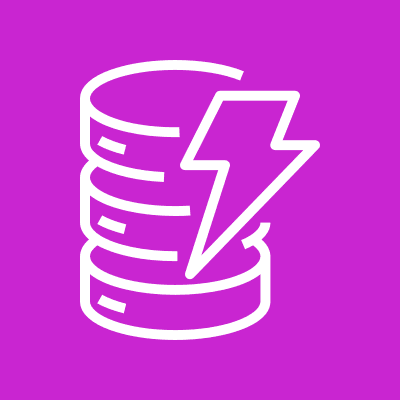
AWS Cognito

AWS API Gateway

AWS Key Management Service
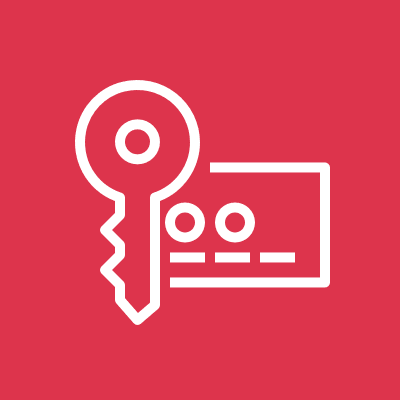
AWS CloudTrail
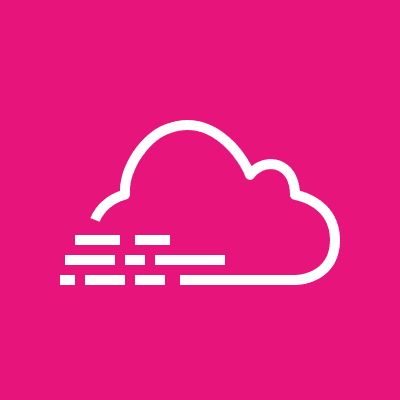
AWS Config

AWS Security Hub

AWS Macie

AWS Storage Gateway

AWS AppConfig

AWS Inspector

AWS S3

AWS Detective

AWS Trusted Advisor

AWS IAM Access Analyzer
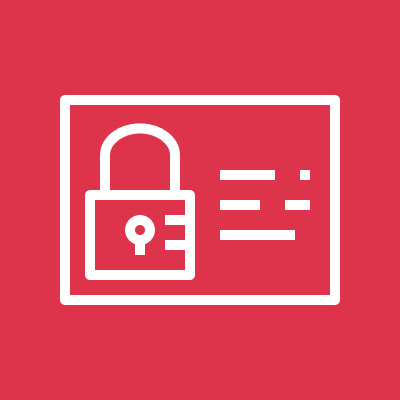
AWS Secrets Manager

AWS Artifact
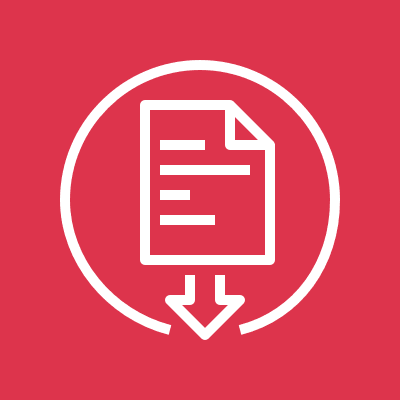
AWS GuardDuty

AWS Lambda

AWS EC2

AWS Serverless

At CFOall.com, innovation and experience shape the future of finance.
CFOall.com is a team of professionals with over 30 years of experience in banking, finance, and technology, redefining the way entrepreneurs manage their finances. We not only understand the complexities of the market but also anticipate its future directions. This allows us to provide our clients with innovative tools that enable them to make informed decisions and achieve success in a dynamic business environment.
Agnieszka Boniecka –
CEO
Extensive professional experience working with large and medium-sized enterprises in the areas of financial products, risk management, and transactional banking. Creator of innovative product solutions and market strategies tailored to the needs of corporate clients.
- 1999-2012 ● Deutsche Bank Polska and Deutsche Bank A.G. Frankfurt – Director.
- 1996-1999 ● mBank (BRE Bank) – Senior Dealer
- Graduate of the University of Warsaw.
Mirosław Boniecki – Founder
A leader with over 30 years of experience in banking, international financial markets, and technology. Initiator and creator of innovative solutions and market standards that shape the financial system and market. Successfully managed large organizations and complex IT projects. Founder of ACI Poland.
- 2001-2010 ● Bank BPH – Vice President of the Management Board.
- 1989-2001 ● mBank (BRE Bank) – Treasurer.
- Graduate of the Warsaw School of Economics.

























